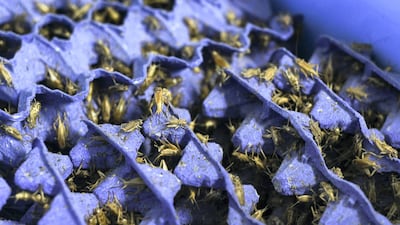Lessons learned from the decades-long project to save the houbara bird could now help other endangered species.
Majid Al Mansouri, managing director at the leading conservation organisation, International Fund for Houbara Conservation, said their models and databases could be used to help any species that is under threat.
In a webinar for the Earth Optimism summit, held around Earth Day, Mr Mansouri said the houbara birds were a beacon for future conservation.
He said the science behind saving the bird could now be used to model out ways to save other creatures.
“I am optimistic the species will not be extinct," he said. “We worked with intervention models that can be applied to any species that is endangered today. It will be very interesting to apply the houbara models to other species.”
He added that they could also now plot species recovery models and pick the best option to use on any endangered species in the wild.
“We have the biggest data base for a single species," he said. "All the challenges that the breed can face has been modelled.”
The International Fund for Houbara Conservation (IFHAC) works with the National Avian Research Centre and Sheikh Khalifa Houbara Breeding Centre in Abu Dhabi and has developed one of the largest repopulation programmes of an endangered species anywhere in the world.
The IFHC, bred more 64,000 houbara chicks at its breeding centres in the UAE, Morocco and Kazakhstan during the 2019 breeding season.
Almost 22,000 birds were released into the wild to replenish wild populations, the Fund’s 2018-2019 report said
The Fund has now released over 285,000 birds across the migratory range of the species, from Morocco to Mongolia, since the captive breeding programme was launched.







